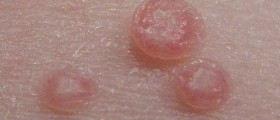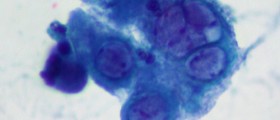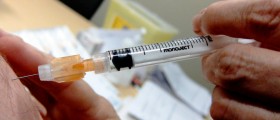Genital warts are quite unsightly skin changes that form in the genital area. They develop as a consequence of infection caused by the human papillomavirus. The virus is transmitted via unprotected sex and affects both genders equally.
There are more than 70 types of human papillomavirus. Several of them can cause infection in the genital area affecting the penis, vulva, urethra, vagina, cervix, and the area around the anus. In many people, there is an infection with human papillomavirus but the condition is asymptomatic, the person simply does not show clinical signs of the infection.
This can be a serious problem since not having any symptoms or signs of the disease does not mean one is not infected. Such people tend not to use proper protection and easily spread the infection to their partners.

What do Genital Warts Look Like in Men?
Men suffering from genital warts usually develop typical skin changes on their scrotum or the penis, around the anus, and sometimes in the urethra. Genital warts on the penis are generally smooth on the top and those that affect the anus are rough and have projections that protrude out and resemble fingers.
Some genital warts in men give off a pearly sheen and are darker in color. They also resemble cauliflower. In the majority of cases, genital warts in men stand well off the skin although they may be only slightly elevated. Detection of warts may be difficult since they may hide under the pubic hair.
What do Genital Warts Look Like in Women?
Genital warts in women are similar to genital warts in men. The only difference is that they predominantly accumulate around the vagina since this genital area is rich in moisture. In case the woman has noticed genital warts around the vagina she is due to consult her gynecologist who will perform an exam and determine whether other parts such as the cervix are also affected by warts. This is essential since genital warts of the cervix may cause cervical cancer.
Female genital warts are pinkish, reddish, or gray swellings. Apart from being located around the vagina in women genital warts also develop in the anal area and even inside the very anus. Similarly to genital warts in men even in women a collection of warts create cauliflower-like structures. The skin changes are usually accompanied by unpleasant symptoms such as a burning or itching sensation and in some cases, there is also bleeding from the skin changes.
- To obtain an in-depth understanding of patients' perceptions of genital warts, we used qualitative focus-group interviews with five men and five women aged between 18 and 30 years who had genital warts. The interview guide was based on a literature review that identified important issues and questions. The data were analysed using a medical anthropological approach.
- The average age of the men and women in this study was 25.8 years and 24.4 years, respectively. The participants had had their present case of GW between 3-38 months at the time of the focus groups. This implies an average duration of 11 months. For seven participants this was their first case of GW, while three participants had an earlier (first) case of GW.
- The participants' views on having GWs had changed since the time of diagnosis. The majority did not know much about the disease before and had initially been optimistic about it being cured. Pessimism had gradually set in as it became clear that treatment can be complicated. The long and uncertain timeline as well as the psycho-sexual consequences of the disease had taken the participants by surprise and this had increased the burden associated with GWs over time.
- The majority of participants indicated that it was their sex and love life that had suffered most from having GWs. Their libido was low and their sexual initiative was reduced, and pleasure and spontaneity was often lost during intercourse because of awareness of the warts, fear of transmitting the disease or repulsing the partner, negative self-perception and soreness due to treatment. This affected steady relationships and for those who were single it affected their ambition to seek a new partner.
- www.nhs.uk/conditions/genital-warts/
- www.cdc.gov/std/hpv/stdfact-hpv.htm
- Photo courtesy of Rrreeewww by Wikimedia Commons: commons.wikimedia.org/wiki/File:Feigwarzen.jpg

















Your thoughts on this
Loading...